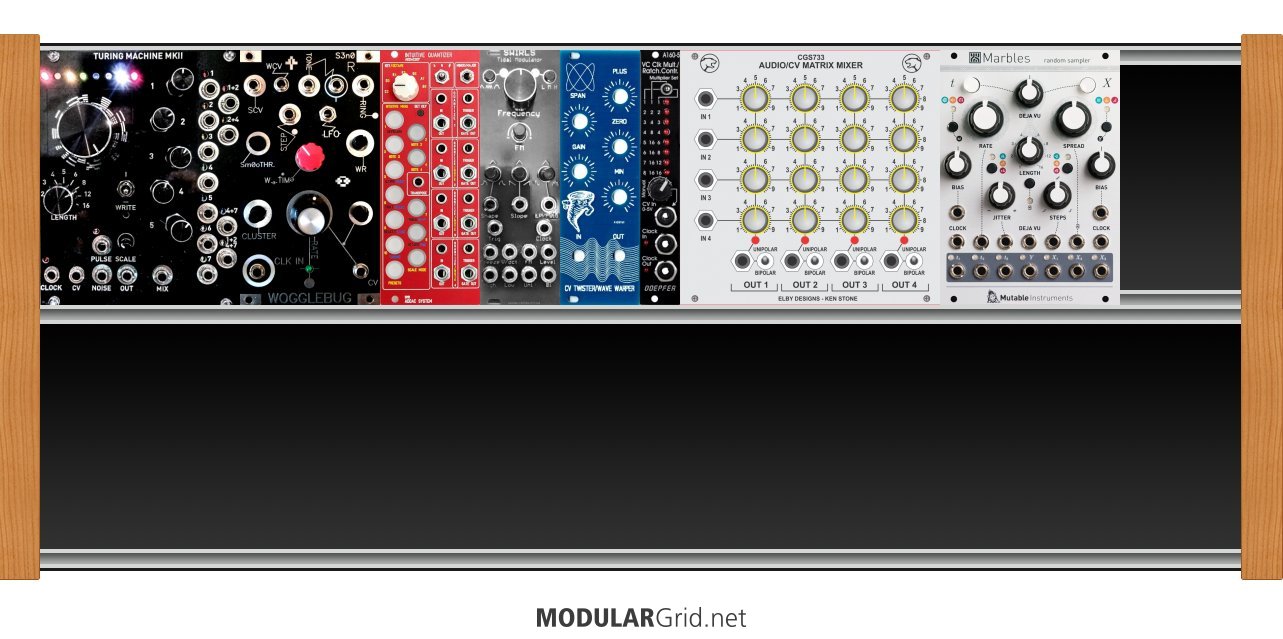Hi, I currently have some desk top modular synths: moog werkstatt, m32, Grandmother, Lifeforms Sv-1, Make Noise 0-coast.
I would like to (eventually) expand their possibilities with some extra modules.
I am a fan of self generative Krell-type stuff.
In the jpeg link below you can see the types of modules I might be interested in. I'm not saying I want all of them, as there are some similar ones. But here's my thinking, I can use an oscillator from the desktop to go into a randomiser module.
Whilst the Grandmother has a random arp or sequencer and the 0-coast has a random clock function (I would like to continue using them too), I would like something extra to send an oscillator into for extra variation.
I would like a pitch quantiser to make the randomness more musical.
A mixer and a random sampler like Marbles.
A clock divider, sequence switch to trigger envelopes at different clocks?
And I added swirls and wave warping modules to change the wave forms.
A small rack with maybe only four or five modules might be ideal.
It would be my first rack and why I'm throwing out my vibe for feedback before I waste any money buying something I regret.
Any advice would be awesome.
Thanks for your time.
https://cdn.modulargrid.net/img/racks/modulargrid_1151024.jpg


